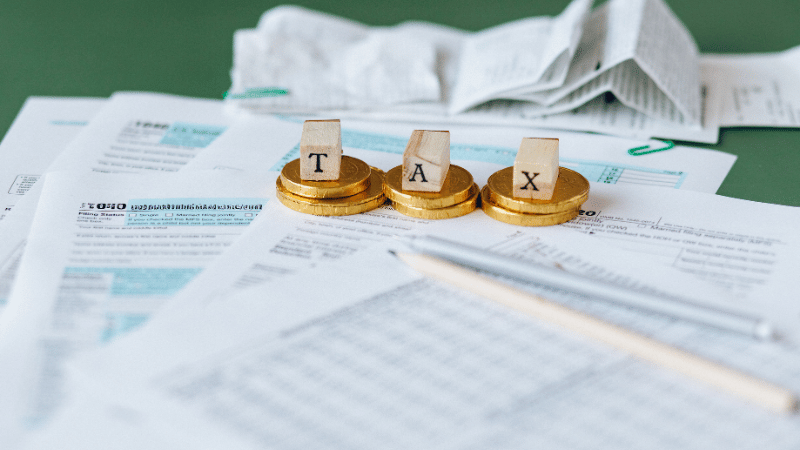Wisconsin R&D Tax Credit: Key Info for Business Savings

Can businesses in Wisconsin apply for the Research and Development Tax Credit (R&D Tax Credit), and how can they maximize this tax benefit? We’ll look into how companies can determine if they’re eligible for this tax credit, how to calculate it, and what makes it unique in Wisconsin.
What are Wisconsin R&D Tax Credits?
Modeled after IRC § 41, the Wisconsin R&D Tax Credit is equivalent to 5.75% of the excess qualified R&D expenditures (QREs) over the base amount (half of the prior three years’ QREs). Since this is a comparative credit that uses the preceding three year’s QREs to determine the base, if a company doesn’t have at least three years of expenses, the credit equals 2.875% of a company’s excess QREs over the base amount.
Does Wisconsin have an R&D credit?

Yes, the state of Wisconsin offers an R&D tax credit for qualified research expenses conducted within its vicinity.
Eligibility Criteria for Wisconsin Businesses
Companies can file for the R&D Tax Credit in the state if they have QREs as determined by IRC §41 in Wisconsin during the tax period. Eligible entities can claim the R&D Tax Credit to use as a tax offset, and it is non-refundable. Wisconsin tax returns can be changed as far back as four years to claim the credit.
Wisconsin also offers the following Research Tax Credits:
- Research Credit for Activities Related to Internal Combustion Engines
- Research Credit for Activities Related to Certain Energy Efficient Products
Four-Part Test for Qualifying Activities
For a company’s activities to be considered qualified research expenses, it must pass the four-part test. These four criteria help businesses determine if they can include certain activities in their tax claim.
Technological in Nature
The activity should rely on principles of physical sciences, biological sciences, computer science, and scientific or engineering methods. It should involve using technology or engineering in a scientific field.
This activity should also aim to develop or improve a product, process, or software’s functionality, quality, performance, or reliability. Some examples include improving manufacturing processes, developing new materials, or enhancing software functionality.
Permitted Purposes
The activity must relate to a new or improved business component’s function, performance, reliability, quality, or composition. It should aim to develop a new or improved software, product, or process. It should also ensure that the research is not conducted for non-commercial purposes.
Elimination of Uncertainty
The activity should unearth information to eliminate uncertainty about a particular method or capability for developing or improving a process or product. There is uncertainty if the capability, method, or design of the software, product, or process is uncertain or not readily known.
Process of Experimentation
The activity should involve experimentation involving evaluating alternatives, testing and modeling, simulation, confirming hypotheses through trial and error, or refining or discarding hypotheses. It must also involve a systematic process to assess alternatives, like testing hypotheses, iterative analysis, modeling, and prototyping. The activity should also determine uncertainties and test potential solutions to resolve them.
Carrying Forward & Refunding the Wisconsin R&D Tax Credit
The credit changed from 100% non-refundable to 10% refundable for tax years starting December 31, 2017, and increased to 15% for tax years that start on January 1, 2021. The refundable portion is 25% for tax years beginning after December 31, 2023.
The maximum refundable amount is computed by multiplying the current year’s research credit by 15%. The refundable portion is the lesser of the current year’s research credit remaining after subtracting the current year’s credit used to offset tax or 15% of the current year’s research credit.
Wisconsin Qualifying Research Expenditures

Not all expenses incurred can be declared for one’s income tax liability. Companies should consider that the research expenses that qualify for the Wisconsin Research and Development tax credit program are as follows: the R&D tax credit covers two categories of qualified research expenses: in-house and contract research expenses. In-house research expenses include salaries paid to employees involved in any qualified activities, supplies bought for qualified research, and contract research expenses for this research.
To clarify, only wages can be declared qualifying research expenditures. In addition, it should be highlighted that only employees involved in the qualified research activities or directly supporting these initiatives are counted.
Any tangible item bought to conduct the research activity can be considered a supply for this tax credit. Contract research expenses are when a business performs qualified research on behalf of the taxpayer.
How to Claim Wisconsin R&D Tax Credits?
Companies that intend to claim Wisconsin R&D Tax Credits must complete Form WI Schedule R, submitted with the annual Wisconsin state return.
Companies must present documentation to justify the figures declared. For example, the company should show sales invoices, payroll files, and official receipts so that the Department of Revenue can cross-check the amount stated.
Calculating the Wisconsin R&D Tax Credits

The credit is calculated as 5.75% of QREs that exceed the base amount, which is 50% of the average QREs for the preceding three tax years. The credit is calculated as 2.875% of the current year’s QREs if the taxpayer had no QREs in the three past tax years.
Recent Changes to the Wisconsin R&D Tax Credit
For tax years 2021 and 2022, up to 15% of a taxpayer’s state R&D credit can be refunded, and this goes up to 25% beginning in the 2024 tax year. The refundable portion of the credit is the lesser of the unutilized credit, 25% of the credit beginning in 2024.
Wisconsin chose not to adopt the changes the Tax Cuts and Jobs Act of 2017 had pushed for. Wisconsin decoupled from federal law and continues to allow full expensing of IRC Section 174 research and experimentation expenses in lieu of requiring taxpayers to capitalize and amortize these expenses over five years for research conducted within its territories.
Next Steps
Companies that intend to maximize the R&D Tax Credit in Wisconsin should work with tax experts who are familiar with the state’s rules and regulations. They can help businesses maximize this tax claim and plan for the long term.
FAQs
What is the Wisconsin Research Credit Schedule R?
Research Credit Schedule R is the tax form used in Wisconsin to claim R&D tax credit.
What is the dependent tax credit in Wisconsin?
Wisconsin dependent tax credit provides substantial relief to families grappling with childcare expenses.
Are Wisconsin tax refunds delayed?
Paper returns may incur some delays with Wisconsin tax refunds.